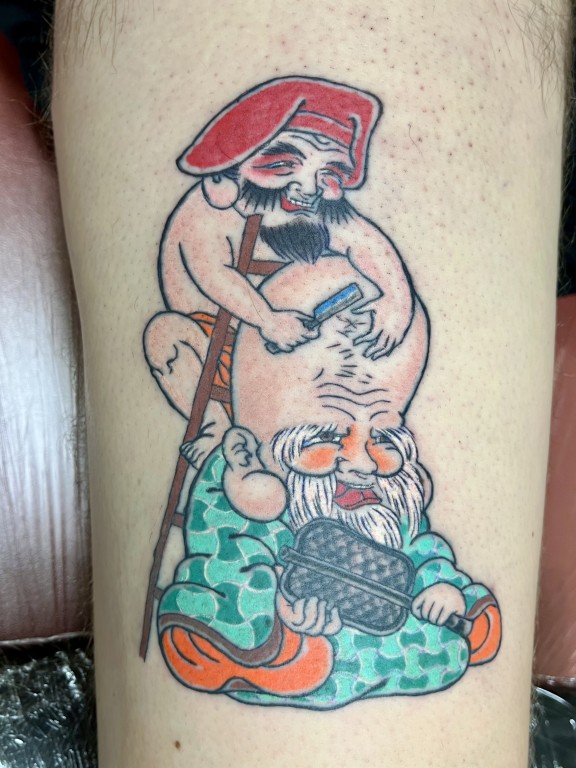Do you know about Seven Lucky Gods? In Japanese mythology, the Seven Lucky gods or Seven gods of Fortune are believed to grant good luck.

One of them, Fukurokuju is the God of wisdom and longevity and has an elongated head.

And Daikokuten is very popular as a syncretic Japanese deity of fortune and wealth.

Daikoku-ten climbing a ladder to reach the top of Fukurokuju’s elongated head to aid in shaving. This motif is from Ōtsu-e.
Tattooist Ryugen
Ōtsu-e
Known as pictures from Ōtsu; A waypoint for travelers between Kyoto and Edo (Tokyo) It is a comic form of folk art which gained popularity in the 1600’s
While often humorous in nature they also often served a morally didactic purpose. Featuring motifs that are readily recognized even today.
Here Daikokuten ( the deity of fortune) with his characteristic short legs is seen climbing a ladder to reach the top of Fukurokuju’s ( the deity of longevity) elongated head to aid in shaving. The two are both members of the seven lucky gods and are often featured together.
Famous examples of Ōtsu-e include
•Demons portrayed as monks collecting alms
•Demons taking a bath (Many wash the body but not the mind)
•A blind musician using his walking stick to fend off a dog who bites at his trailing sash (intended as a warning against being caught unaware, the loose sash is representative of a “loose” or unfocused mind)
Horisuzu